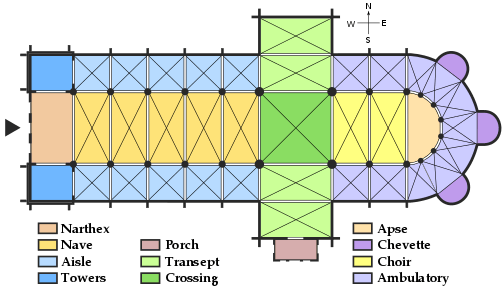Liturgical east and west

Liturgical east and west is a concept in the orientation of churches. It refers to the fact that the end of a church which has the altar, for symbolic religious reasons, is traditionally on the east side of the church (to the right in a diagram).
Traditionally churches are constructed so that during the celebration of the morning liturgy the priest and congregation face towards the rising sun, a symbol of Christ and the Second Coming.[1] However, frequently the building cannot be built to match liturgical direction. In parish churches, liturgical directions often do not coincide with geography; even in cathedrals, liturgical and geographic directions can be in almost precise opposition (for example, at St. Mark's Episcopal Cathedral, Seattle, liturgical east is nearly due west).
For convenience, churches are always described as though the end with the main altar faces due east, whatever the reality, so that common terms such as "east end", "west door", "north aisle" etc are immediately comprehensible. These orientations may be preceded by "liturgical", or not.[2]
References
- ↑ "Facing East". Catholic Culture. October 1999. Retrieved 25 February 2014.
- ↑ "East" in Curl, James Stephens, Encyclopaedia of Architectural Terms, 1993, Donhead Publishing, ISBN 1873394047, 9781873394045